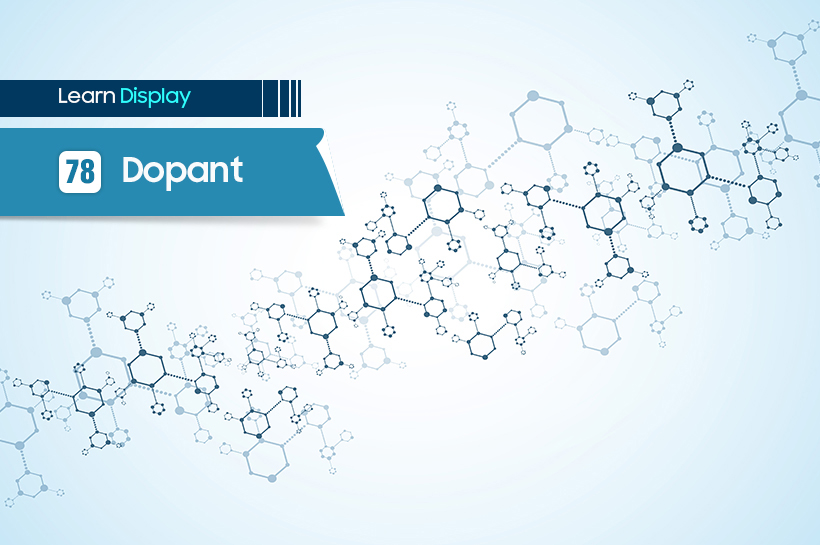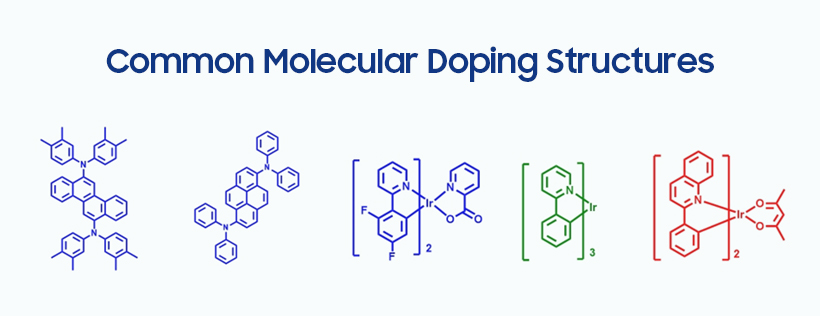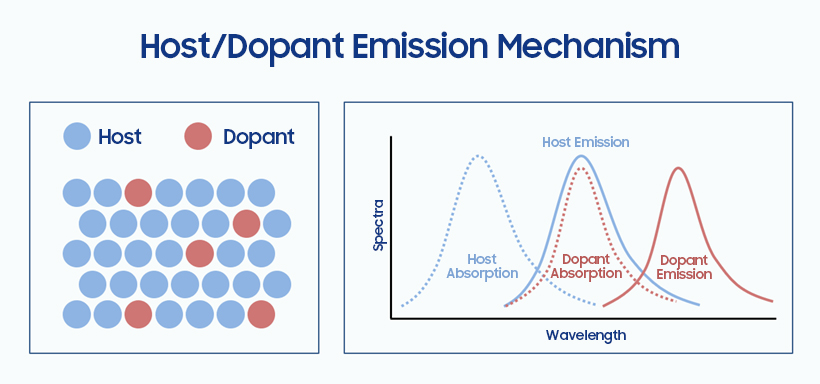
A dopant refers to a light emitting material in OLED panels that makes up the self-illuminating emissive layer (EML) along with a host material.

As current flows the cathode to the anode, electrons, and holes (absence of electrons) in the molecules combine. An exciton is formed through this combination and once the energy stabilizes, it is the energy difference between the positive and negative charge that generates light emission on OLED panels.

The emitting layer (EML) consists of a host and doping material: A host material supports the formation of exciton energy by effectively binding electrons and holes, as a dopant interacts with excited excitons and helps them emit light efficiently.

Fluorescent and phosphorescent materials are being applied to OLEDs. For OLEDs based on fluorescence material as emission layer, Förster energy transfer (method in which a host material absorbs exciton energy and then interacts with the doping material to emit light) occurs. Phosphorescent OLEDs use Dexter energy transfer in which the dopant directly absorbs electrons/holes to illuminate.
Unlike the singlet emission method used in the early stages of development in OLED research, a more complicated structure of emitting layer (EML) using the host and doping technology is being widely used in today’s OLED panels with its high color purity and luminous efficacy.



